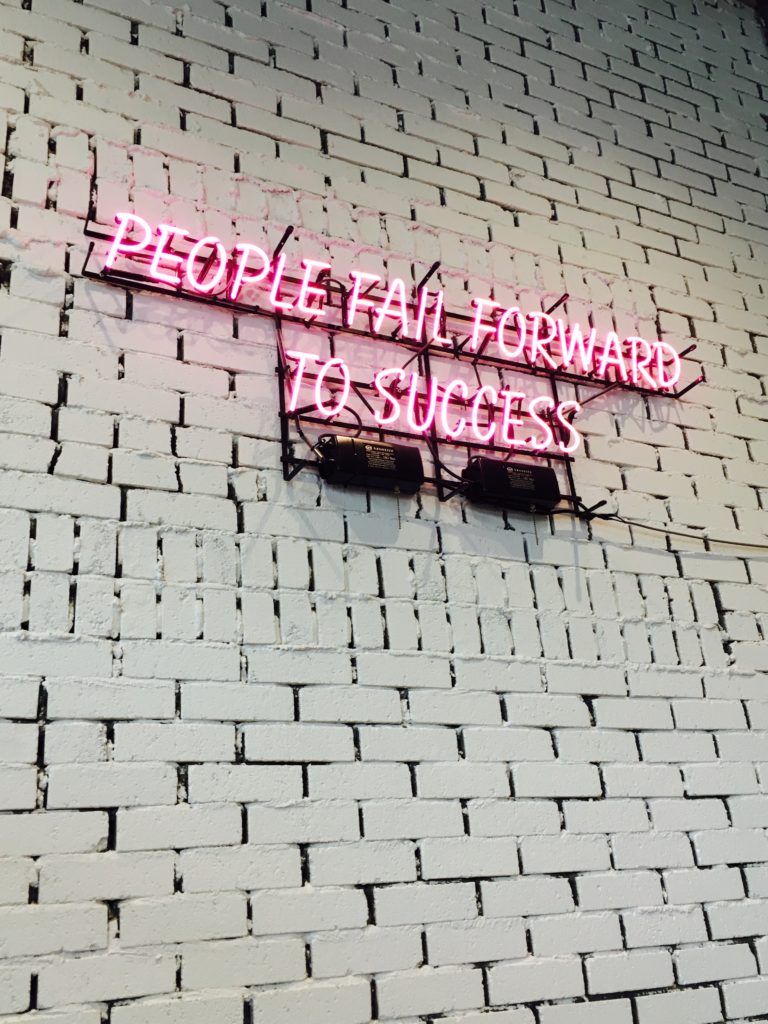
We celebrate the winners of elections. Cheer Super Bowl victors and the rising stock market. 4.0 grades and 800 SAT scores get our attention and praise. So do bestseller lists, the National Book Awards and the Pulitzers.
In our success-driven culture, it’s hard to accept that failure, not triumph, is a routine part of the writing craft, a constant in a writer’s life.
Sometimes we get lucky and the first draft is the final one. Sometimes the fates shine upon us and the first lead we write sings. Sometimes the agent or the editor says yes.
But on the journey to make meaning with words, we often stumble. The draft is a jumble, the language sinks rather than soars. Rejection follows submission, sometimes so frequently, it’s easy to lose heart, to give up rather than try and lose. Failing is never fun, but it’s essential for those who practice the craft of writing, indeed any art form.
I’ve been giving failure a lot of thought recently after discovering “The Fail Safe,” a new podcast devoted to writing and failure. Its creators aim to explore “how today’s most successful writers grapple with and learn from failure.” If you’re feeling like one, its guests offer a bracing dose of reality, as well as a modicum of comfort.
”Being an artist depends necessarily on a great tolerance for failure. It’s impossible to make art unless you give yourself permission to fail every day.“ That’s Garth Greenwell, author of the best-selling, critically-acclaimed, novel ”What Belongs to You” speaking in the inaugural episode.
In the second, novelist and short story writer Chris Boucher spoke about the decade it took to write his first novel, “How to Keep Your Volkswagen Alive.” “If there wasn’t daily failure there was almost-daily failure for a long time,” he said. Boucher didn’t have a plotline for two years. A recent short story went through more than 30 drafts before it was published. “There are so many dead ends, so many false starts,” he said, “that I consider it part of the practice.”
.
Samuel Beckett “came to believe failure was an essential part of any artist’s work, even as it remained their responsibility to try to succeed,” Chris Power wrote in a Guardian essay about the revered modernist novelist and playwright. Beckett couldn’t find a publisher for his first novel. Sales for the short story collection he plundered from the book tanked.
But Beckett refused to surrender to the despair that accompanies failures.
“Ever tried. Ever failed. No matter,” he famously wrote in his short story “Worstword Ho.” “Try again. Fail again. Fail better.” Failing better eventually brought him success, including a Nobel Prize for literature.
When I consider my own failures— the rejected stories, the elusive prizes, the novel abandoned and the play that I never sent out because I was afraid of rejection — it tends to make me more anxious than depressed. Will the writing well run dry? Will I ever achieve all my dreams? What I took away from the first two episodes of “The Fail Safe” is that failure and anxiety are strands in the DNA of the artistic life. But there is a way to combat them.
“The only strategy for making that anxiety bearable,” said Greenwell, “is showing up every day to do the work. Whether the work shows up or not is out of your hands, but you can show up for the work to happen.” After that, he said, the rest is all luck.
These writers have helped me redefine the nature of failure. It is not losing out on prizes or even publication.
“What failure means for a writer is to stop writing,” Greenwell said. “The only thing we have control over is showing up to do the work.”
“And that,” he added, “means giving ourselves as many possible chances as we can to be lucky.”
So I’ll give myself more chances to be lucky and hope you’ll do the same by doing what successful writers do no matter how many failures they face. They show up and do the work. They court failure every day, hoping for victory.